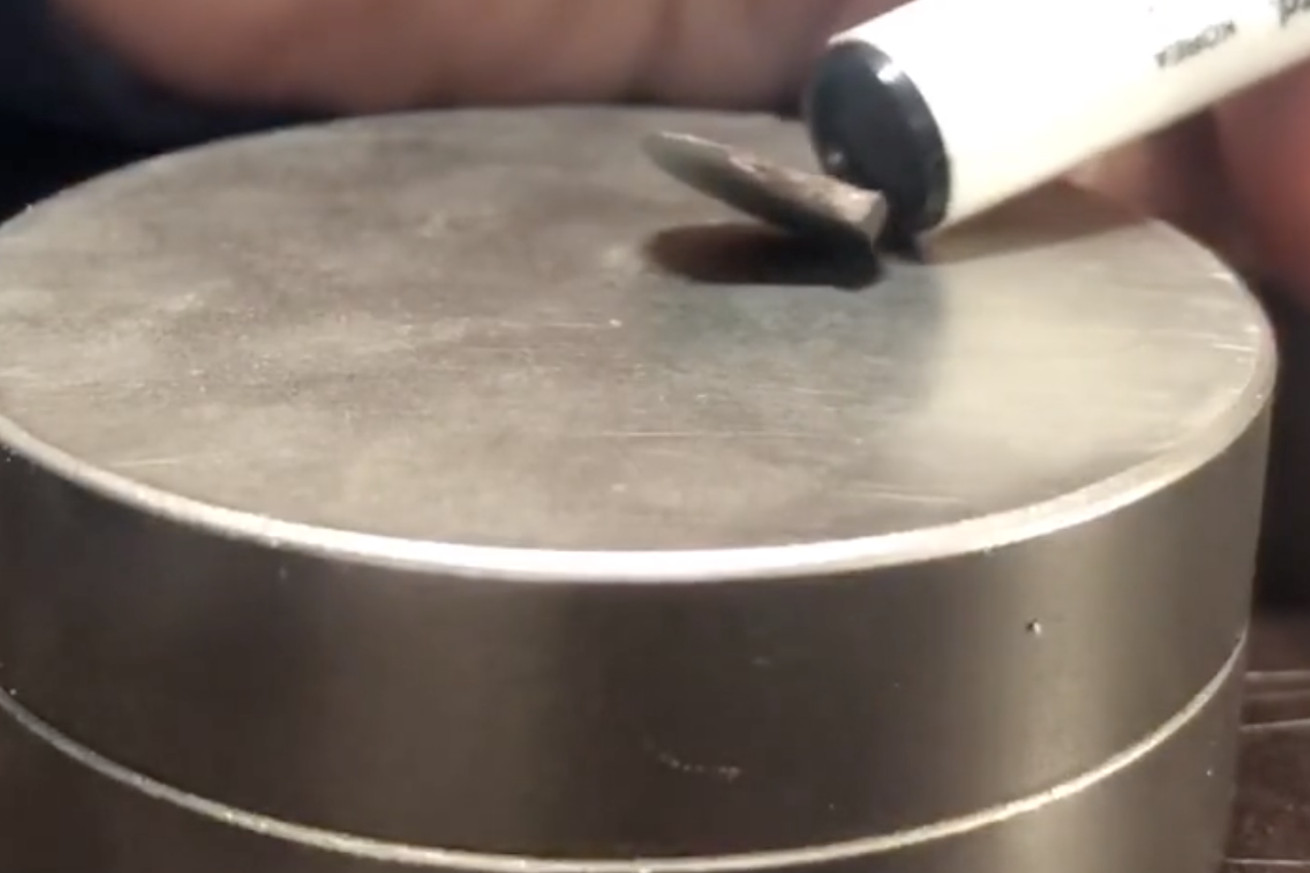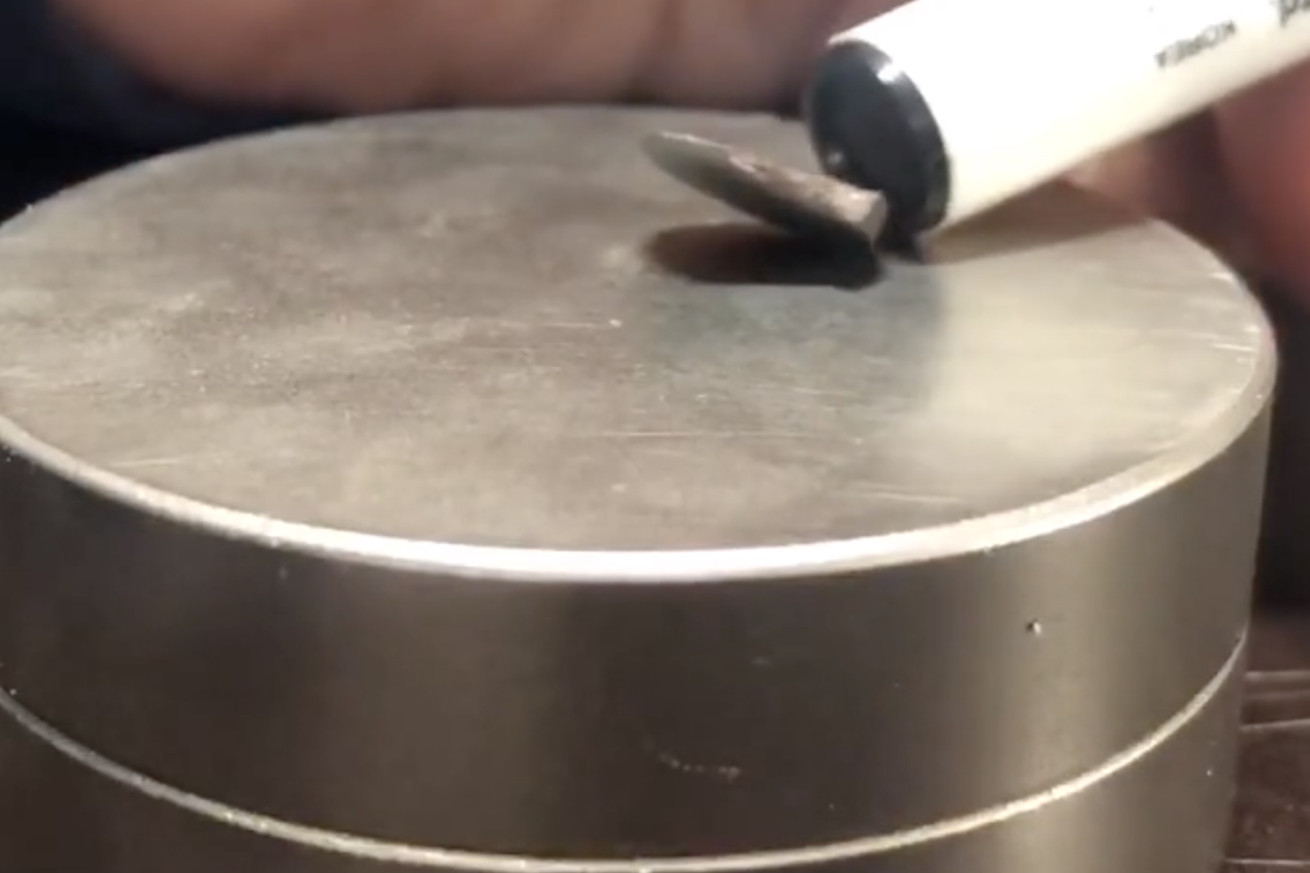
Is that viral ‘superconductor’ legit?
LK-99 hasn’t turned out to be the miraculous superconductor some people initially claimed it was.
The newly discovered material made headlines after a research team claimed it was the first room-temperature superconductor, which could revolutionize our energy system. Speculation that it could bring on a perfect power grid or easily make trains levitate sparked a frenzy to test whether LK-99 really was as game-changing as portrayed by the original team.
But the results so far indicate that LK-99 is not a superconductor, at room temperature or otherwise. A slew of research groups have released studies that counter claims originally made about LK-99.
“With a great deal of sadness, we now believe that the game is over. LK99 is NOT a superconductor, not even at room temperatures (or at very low temperatures). It is a very highly resistive poor quality material. Period. No point in fighting with the truth,” the University of Maryland’s Condensed Matter Theory Center (CMTC) posted on August 7th.
“No point in fighting with the truth.”
A superconductor is any material that can conduct electricity with zero resistance (The Verge has a more in-depth explainer here). That saves a lot of energy from being lost and also makes for powerful electromagnets. There are other superconductors used today in quantum computers and MRI machines. But they only work in extremely cold temperatures (hundreds of degrees below zero Fahrenheit) or under very high pressures. That keeps them from being deployed more widely in ways that could potentially change daily life.
What made LK-99 so exciting initially was the prospect of having a new superconductor that could work at room temperature and under ambient pressure. Having a superconductor that can be used in more normal conditions would open up all kinds of possibilities, ranging from improving existing technologies, like more powerful medical imaging machines, to potentially bringing moonshot technologies like nuclear fusion reactors within reach.
“We believe that our new development will be a brand-new historical event that opens a new era for humankind,” researchers who discovered the LK-99 wrote in a now controversial paper they published in late July without peer review. There were inconsistencies in data they published, and many outside experts had their doubts from the start.
The Quantum Energy Research Centre in South Korea, which published the paper, did not respond to requests for comment.
Proving whether LK-99 was the real deal depended on whether other researchers could replicate the Korean researchers’ results. Prestigious research labs across the globe took on the task, as did enthusiastic amateurs caught up in a wave of viral social media posts about LK-99. They set out to make samples of the material and test it themselves. Some people livestreamed their efforts on Twitch. Labs hurriedly published their own results on ArXiv, the same server for preprints (papers that haven’t undergone peer review) where the original papers on LK-99 first appeared.
Now, a body of evidence has piled up that disproves claims about LK-99. “There is no sign of superconductivity in LK-99 at room temperature,” says one preprint from the CSIR-National Physical Laboratory in India. (That was one of the papers cited by the University of Maryland’s Condensed Matter Theory Center this week when it posted that “the game is over.”)
Another crucial test for LK-99 was over its ability to levitate. The researchers who discovered it shared a video of a fragment of the material appearing to partially levitate over a magnet. That happens with superconductors because they expel a magnetic field through a phenomenon called the Meissner effect. Another popular video on social media showed another shard of LK-99, made by a research team from Huazhong University of Science and Technology, appearing to levitate.
But hopes that levitation meant that LK-99 is a superconductor were dashed this week after another preprint posed another explanation for why the material might float. The International Center for Quantum Materials in China found evidence that the material is ferromagnetic. That means it can be magnetized and then attracted or repelled by other magnetic materials (iron, for example, is ferromagnetic).
Some big-name labs, like the US Department of Energy’s Argonne National Laboratory, have yet to share their findings. But there are already well over a dozen papers on ArXiv casting doubt on LK-99. “There may be room temperature superconductors to find, but this does not seem to be one,” Chris Grovenor, professor of materials at the University of Oxford and director of the Centre for Applied Superconductivity, tells The Verge in an email.

